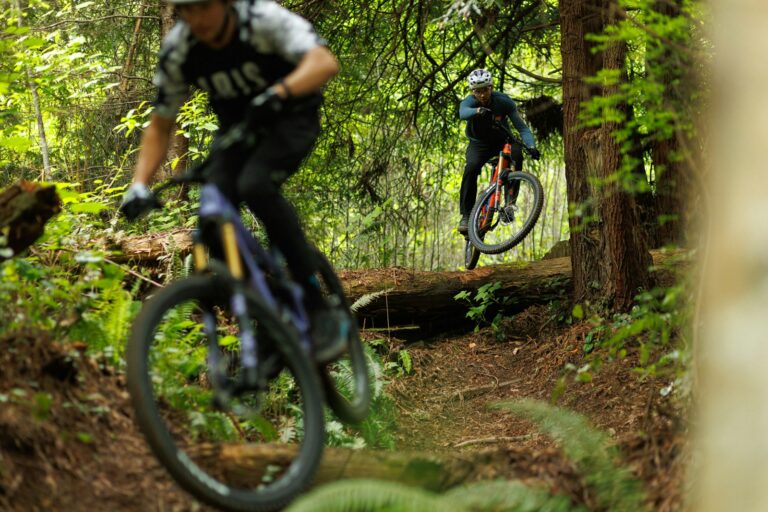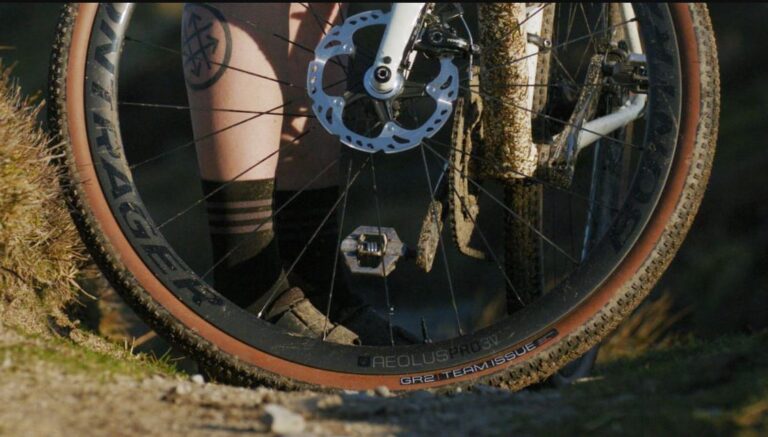Gravel Bike Wheel Buyers Guide

I. Introduction
In the following Gravel Bike Wheel Buyers Guide, my aim is to help you find the perfect gravel bike wheelset for your riding style. Gravel biking, an exhilarating blend between road and mountain biking, offers adventurous souls the ability to explore less-traveled paths and rugged terrains. Central to this adventure is your bike’s wheelset. The right wheels can make a significant difference in your gravel riding experience, ensuring comfort, durability, and optimal performance.
II. Anatomy of a Gravel Bike Wheel
Every gravel bike wheel consists of several key components: the rim, spokes, hub, and the tire. While similar in many respects to road and mountain bike wheels, gravel wheels are specifically designed to withstand the challenges of mixed terrains.
III. Key Considerations When Buying Gravel Bike Wheels
- Wheel Size:
- Standard Sizes: Gravel bikes come with 700c wheels, the same size as road bike wheels.
- Rim Material:
- Materials Overview: Aluminum is popular due to its balance of weight, strength, and cost. Carbon fiber offers weight savings and strength but at a higher price. Steel is durable but heavier.
- What to Choose: Prioritize your needs. If weight is crucial, consider carbon. For a budget-friendly option with good performance, aluminum is a safe bet.
- Rim Width:
- Matching with Tires: A wider rim pairs well with wider tires, offering stability and grip.
- Comfort: Wider rims can often provide a more comfortable ride, as they allow for greater tire volume.
- Tubeless Compatibility:
- Benefits: Tubeless setups can reduce punctures and allow you to run lower tire pressures for better grip.
- Identification: Look for “tubeless-ready” labels or consult product descriptions.
- Spoke Count and Lacing Pattern:
- Strength vs. Weight: More spokes typically mean a stronger wheel but can add weight. Consider the balance based on your riding conditions.
- Patterns: Different lacing patterns can impact wheel resilience and durability. Cross-laced spokes are common for their strength.
- Hub Quality and Type:
- Types: Thru-axle hubs are becoming more popular due to their increased stiffness compared to quick release.
- Performance: Look for hubs with quality bearings and fast engagement for optimal performance.
- Weight Limitations:
- Always check the manufacturer’s recommended weight limits. Ensuring you’re within these limits is crucial for your safety and the wheel’s longevity.
IV. Brands and Models
Some leading brands in the gravel wheel market include Mavic, DT Swiss, and Enve. Each brand offers a range of wheels catering to different budgets and needs. It’s always a good idea to check out detailed reviews before making a purchase.
Click here to find the Best Gravel Bike Wheels reviewed and ranked.
V. Tires to Pair With Your Gravel Wheels
Tire choice can heavily influence your ride. Consider the width, tread pattern, and compound. For smoother terrains, go for narrower tires with minimal treads. Rugged terrains demand wider tires with aggressive treads for grip.
Click here to find the Best Gravel Bike Tires Reviewed and Ranked
VI. Maintenance and Care
Regular wheel maintenance ensures longevity and performance. Periodically check for trueness, clean off dirt and debris, and inspect for any damage. Remember, a well-maintained wheel set will serve you reliably for many adventures to come.
VII. Budget Considerations
Gravel wheels come in a spectrum of prices. Entry-level wheels get the job done, but if you’re serious about performance and durability, consider investing in mid-range to high-end wheels. Balance your budget with your biking needs and aspirations.
VIII. Conclusion
Choosing the right gravel bike wheel is pivotal for a superior riding experience. Have Fun out there! John
FAQ’s
What is the best width for gravel rims?
The “best” width for gravel rims largely depends on the type of gravel riding you intend to do, your personal preferences, and the tire width you plan to use. However, there are some general guidelines to consider:
- Internal Rim Width:
- 17-21mm: Suitable for narrower gravel tires in the range of 28-40mm.
- 21-25mm: This is a versatile range accommodating wider tires, typically from 35mm to 45mm or even a bit wider.
- 25mm and above: Best for the widest gravel tires, 45mm and wider. These are becoming more popular for those who ride rougher terrains and seek maximum comfort and traction.
- External Rim Width: Remember, when considering rim width, the internal width is what matters most for tire compatibility, but the external rim width can influence aerodynamics and wheel strength.
- Terrain and Personal Preference:
- Smoother, Packed Gravel: If you’re mostly on well-maintained gravel roads, narrower tires (and consequently, narrower rims) might be preferable for speed.
- Rough, Loose Gravel: For rougher terrains, wider tires provide more comfort and grip, necessitating wider rims.
- Trend: There’s a trend in the gravel community towards wider tires for increased comfort, especially for longer rides on mixed terrains. This means wider rims are becoming more common.
Ultimately, the “best” rim width will be determined by the kind of riding you do, the tires you want to use, and your own personal preferences. Always consult the tire manufacturer’s recommendations for rim compatibility when choosing a specific tire and rim combination.
What size wheel for a gravel bike?
700c: This is the standard road bike wheel size and is also the most common for gravel bikes. It offers a good balance of speed and efficiency on a variety of terrains. When paired with wider tires, the 700c wheel size provides both comfort on rough surfaces and speed on smoother terrains.
How do I know what bike wheel to buy?
Choosing the right bike wheel involves a combination of understanding your current bike’s compatibility, your riding style, and your personal preferences. Here’s a guide to help you decide:
- Type of Riding:
- Road: Lightweight wheels that prioritize aerodynamics.
- Mountain: Durable wheels that can withstand rough terrains. There are further subcategories, such as cross-country (XC), downhill (DH), enduro, etc., that dictate specific wheel requirements.
- Gravel: Versatile wheels that balance road efficiency with off-road durability.
- Commuter/City: Durable wheels that can handle daily wear and tear, often with wider tires for comfort on city streets.
- Touring: Strong wheels built to carry heavy loads over long distances.
- Wheel Size: Check your current bike’s specifications.
- Common sizes include 26-inch (mostly older mountain bikes), 27.5-inch or 650b (some modern mountain and gravel bikes), and 700c (road, gravel, and city bikes).
- Rim Width:
- Internal Rim Width: Dictates the width of the tire your wheel can accommodate.
- Consider the tire width you aim to ride. Wider tires (e.g., for gravel or comfort) require wider rims.
- Tubeless Compatibility:
- Tubeless wheels allow you to run tires without inner tubes, reducing the risk of punctures.
- Decide if you want to go tubeless. If yes, ensure the rim is tubeless-ready.
- Brake Type:
- Disc brakes: Ensure the wheel hub is designed for disc brakes, either with a six-bolt or a centerlock system.
- Rim brakes: The wheel rim should have a smooth braking surface.
- Axle Compatibility:
- Axles come in various types and sizes: quick release (QR), thru-axle (common sizes include 12x100mm, 15x100mm, 12x142mm).
- Check your bike’s current axle type and size.
- Budget:
- Establish a budget. Wheel prices can vary significantly based on materials (aluminum vs. carbon), brand, and features.
- Remember, the most expensive wheel isn’t necessarily the best for every rider or situation.
- Weight:
- Lighter wheels accelerate faster and are often preferred for racing.
- Heavier wheels can be more durable and suitable for touring or rugged terrains.
- Brand & Reviews:
- Research brands and read reviews to understand the durability, performance, and value of the wheels you’re considering.
- Hub Quality:
Final Tip: If you’re unsure or overwhelmed by choices, visit a local bike shop. They can provide expert advice tailored to your needs and ensure compatibility with your bike.
Do I Need Gravel Specific Wheels?
While you don’t absolutely need gravel-specific wheels for a gravel bike, there are advantages to using them. Gravel wheels are designed to cater to the unique demands of gravel riding, which lies between road cycling and mountain biking. Here’s what you should consider:
- Strength and Durability: Gravel riding can involve everything from smooth dirt roads to rocky, uneven trails. Gravel-specific wheels are built with this in mind, offering a balance between the lightweight design of road wheels and the robustness of mountain bike wheels.
- Width: Gravel wheels often have a wider internal rim width, designed to pair well with the wider tires common in gravel riding. Wider tires provide more cushioning, traction, and stability on uneven terrains, making the ride more comfortable and controlled.
- Tubeless Compatibility: Many gravel riders prefer tubeless setups, as they allow for lower tire pressures (enhancing comfort and grip) and reduce the risk of punctures. Many gravel-specific wheels are designed to be tubeless-ready.
- Brake Compatibility: Modern gravel bikes mostly come with disc brakes, so you’d likely be looking for disc brake-compatible wheels, which are standard on gravel-specific wheelsets.
- Versatility: While gravel-specific wheels are optimized for gravel riding, they can also handle road riding quite well. This makes them versatile for mixed-terrain adventures.
- Budget and Use Case: If you’re just getting into gravel riding and aren’t sure how much you’ll be venturing onto rough paths, or if you’re on a tight budget, starting with a more road-oriented wheelset (or whatever you have) can be okay. As you ride more and understand your preferences, you can invest in a gravel-specific wheelset if needed.
In summary, while you don’t need gravel-specific wheels for a gravel bike, they do offer advantages that can enhance your riding experience on mixed terrains. If you plan to regularly ride on gravel and rough paths, investing in gravel-specific wheels might be a worthwhile decision. If your gravel rides are occasional and generally on smoother paths, you might be fine with non-gravel-specific wheels, at least initially.






